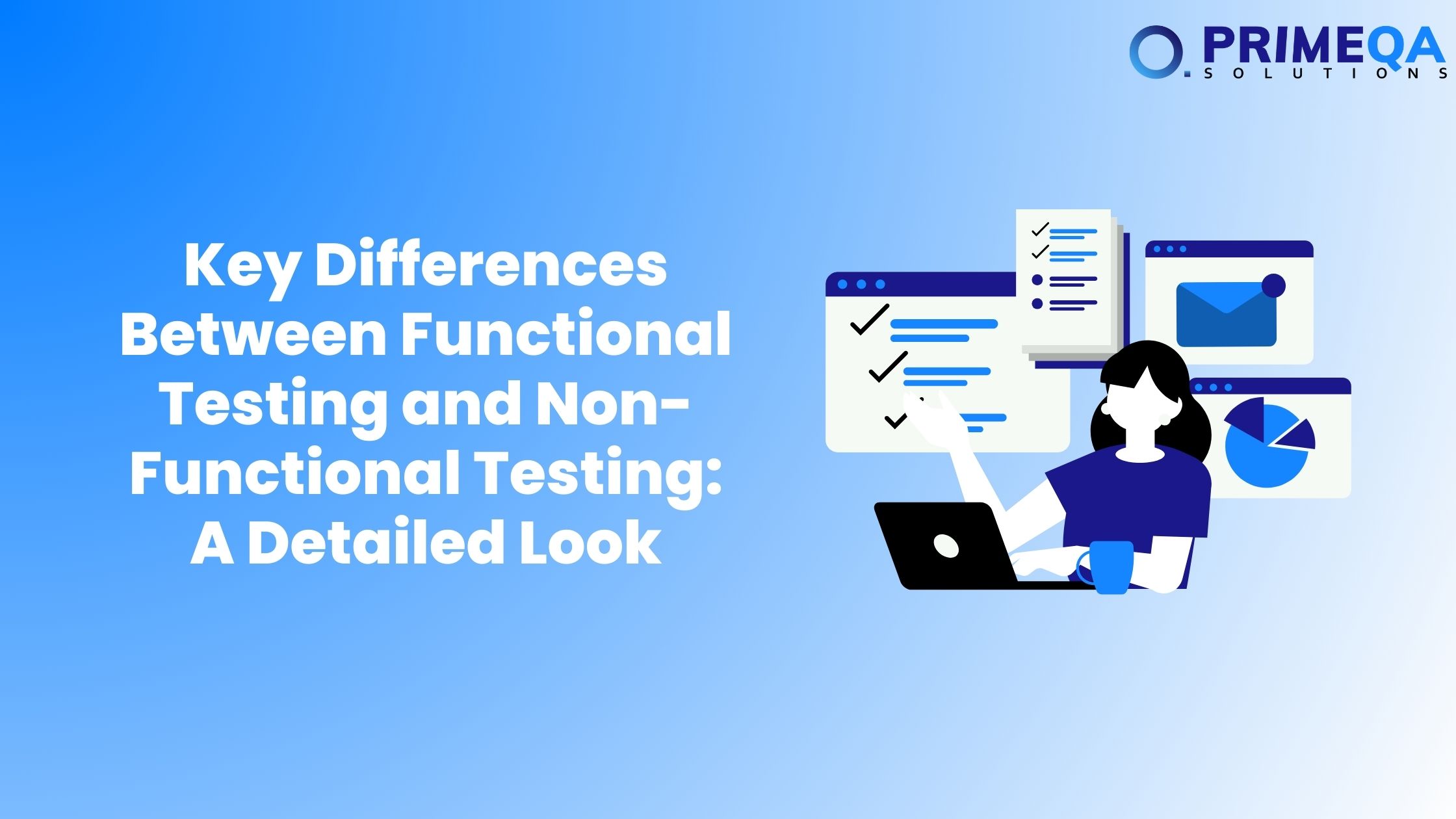In today’s competitive world, business owners must constantly adapt to the latest trends to maintain a good user experience. Functional and Non-Functional Testing has become a prominent part of the software testing industry to retain users by providing an enhanced user experience. So that the system performs flawlessly, it is important for the developers QA professionals, and engineers should. Let’s find out what exactly are these two types of testing how do they impact the software development. Let’s dive deeper into it so that it can help you to make better decisions while performing software testing.

What is Functional Testing?
Functional Testing is done to verify that the software operates according to the specified requirements. This type of testing is performed to focus and validate each function of the software. When you provide appropriate input and compare the output against the outcome that is expected. For example, if you consider a banking application that promises secure transactions, proper software testing enables each transaction to behave as it should behave.
Objective: The main goal of functional testing is to confirm that the software aligns and functions with users’ requirements and expectations. It’s more about how to answer what software testing does.
Approach: It is driven by the requirements of the companies and functional specifications covering the various user scenarios and user cases.
Types of Functional Testing
Integration Testing: It is used to check the interaction between the integrated modules to verify the combined functionality.
System Testing: It helps to asses the complete the integrated system’s functionality as per requirements
Unit Testing: It helps to asses the complete and integrated system’s functionality as per requirements.
Acceptance Testing: It helps to validate the end-to-end business which helps to flow and confirm that the software meets the requirements of the user.
Non-Functional Testing
Unlike functional testing, the role of non-functional testing is to check how well your software performs under certain conditions. This type of testing usually focuses on how the application performs in terms of performance user experience, stability, and responsiveness. Functional testing focuses on answering questions related to what type of questions of software behavior”, nonfunctional testing answers questions related to how type of questions”.
Objective: Software testing aims to enhance and optimize the user experience by focusing on aspects like scalability, usability, and performance.
Approach: Non-functional testing is focused on performance and involves stress testing, load testing, and metrics to elevate resilience and efficiency under various conditions.
Non Functional Testing Types
Stress Testing: It is used to evaluate the system’s stability by testing beyond the normal operational capacity
Load Testing: Assessing the behavior of the software under the expected user load
Security Testing: Examining the ability of the software to protect the data and integrity under threats.
Usability Testing: Ensures the application is user-friendly and intuitive.
Key Difference between Functional Testing and Non-Functional Testing
| Factors | Functional Testing | Non-Functional Testing |
| Objective | The objective is to evaluate and understand the functionality of the software | Evaluation of the software to understand how the software performs under various conditions |
| Focus | Functionality and user interaction | Usability, security and performance of the software |
| Approach | It is based on business requirements and use cases | Based on stress levels and maintaining the performance benchmark. |
| Tools | JUnit, Selenium, QTP | Jmeter, BlazeMeter and LoadRunner |
| Measuring Results | Pass/Fail based on the requirements | Metrics like scalability, stability, and response time |
Functional and Non-Functional Testing
Let’s consider that you have an e-commerce website. It is important to know that the checkout process functions smoothly. What happens when a surge in the user causes the site to crash or slow down? That’s the reason why non-functional testing becomes important for businesses to ensure that the platform can handle volumes deliver quick responses and remain stable. Both of these types of testing are essential to deliver high-quality software products and not only meet the user experience but also perform under varying conditions. Combining both approaches enables the application is not only functional but also resilient and prepared to handle real-world demand.
Best Practises for Effective Testing
To achieve comprehensive software testing you should the practices shared below:
Identifying specific areas: Helps in determining the functionality and impacts the user’s experience and prioritizes user experience.
Using the right tools: Using tools like Selinium, and JUnit are highly effective for functional testing, while Jmeter and LoadRunner excel in non-functional testing.
Including Real World Scenarios: Designing the realistic testing on predicting on how an application will perform in the production environment.
Regularly Update Test Cases: The software helps in evolving and keeping test cases updated and ensures they remain relevant and effective.
Why You Should Consider Investing in both types of testing?
Did you know that more than 55% of software failures are due to performance issues? I ensure strong functional and non-functional testing can lead to higher user satisfaction with fewer technical failures and lower costs in the long run. By using both functional and non-functional testing organizations can assess the performance of their software and create a software product that’s both functional and user-friendly.
Choose PrimeQA SOlutions for Comprehensive Functional Testing
Are looking to enhance the performance of the software and exceeding the expectations of the users. At PrimQA Solutions we specialize in functional testing that helps in verifying each part of your application with business and user requirements. With the help of a dedicated team of experts and using advanced tools like Junit and Selenium we provide functional testing services that help your product to meet the industry standards and offer flawless user experience. Join us in your journey to create a product that not only functions well but enhances the experience of the users
FAQs
- What is the primary purpose of functional testing?
It verifies that each feature of the software performs under the specified requirements. - Why is non-functional testing crucial for software?
Non-functional testing assesses how well the software performs, ensuring it’s reliable, efficient, and offers a smooth user experience. - Which tools are typically used for functional testing?
Popular tools include Selenium, JUnit, and QTP. - Which tools are suitable for non-functional testing?
JMeter, LoadRunner, and BlazeMeter are widely used for non-functional testing to measure performance and stress levels. - Can functional testing be automated?
Yes, many functional tests can be automated with tools like Selenium, saving time and improving efficiency.







